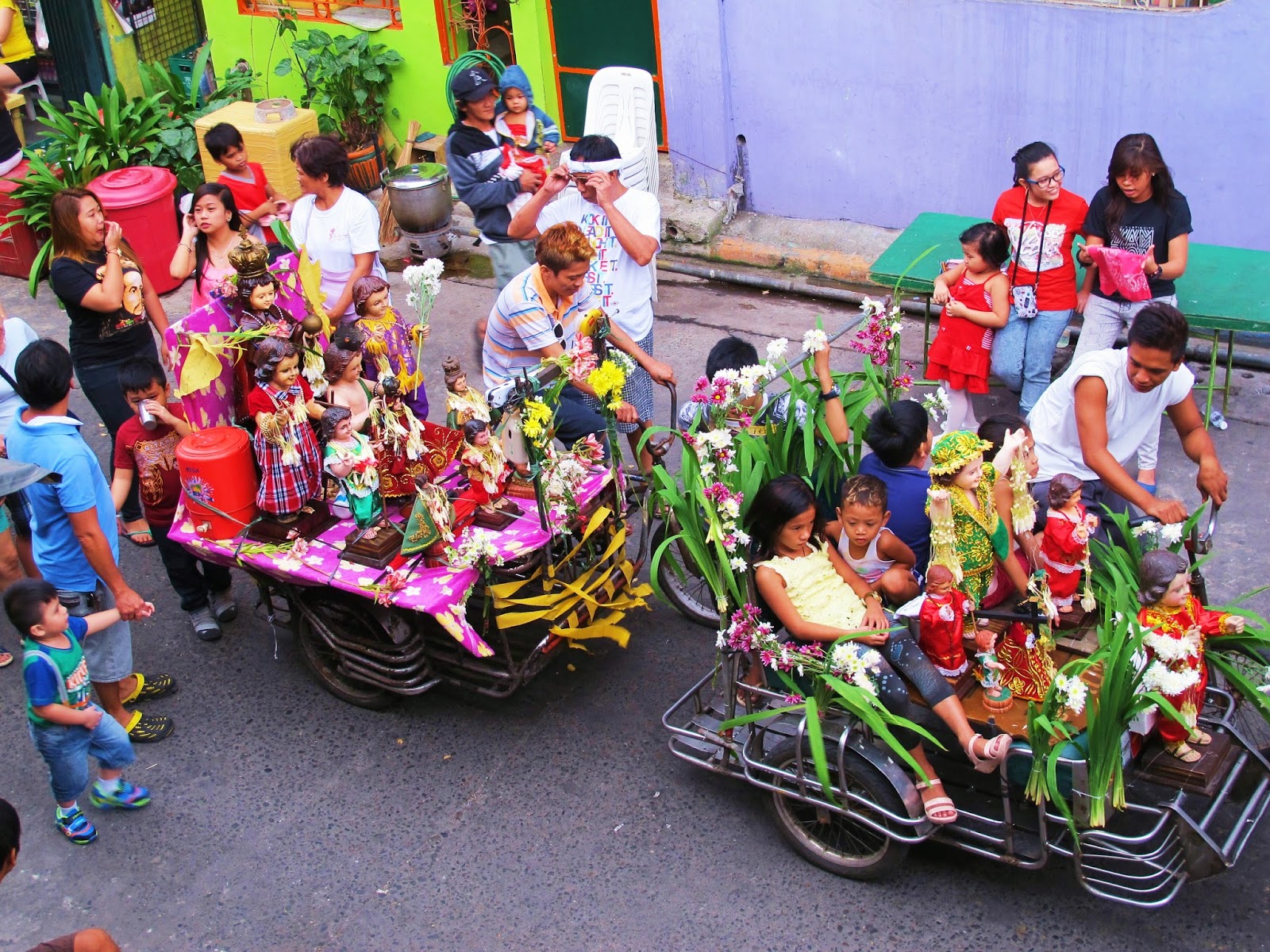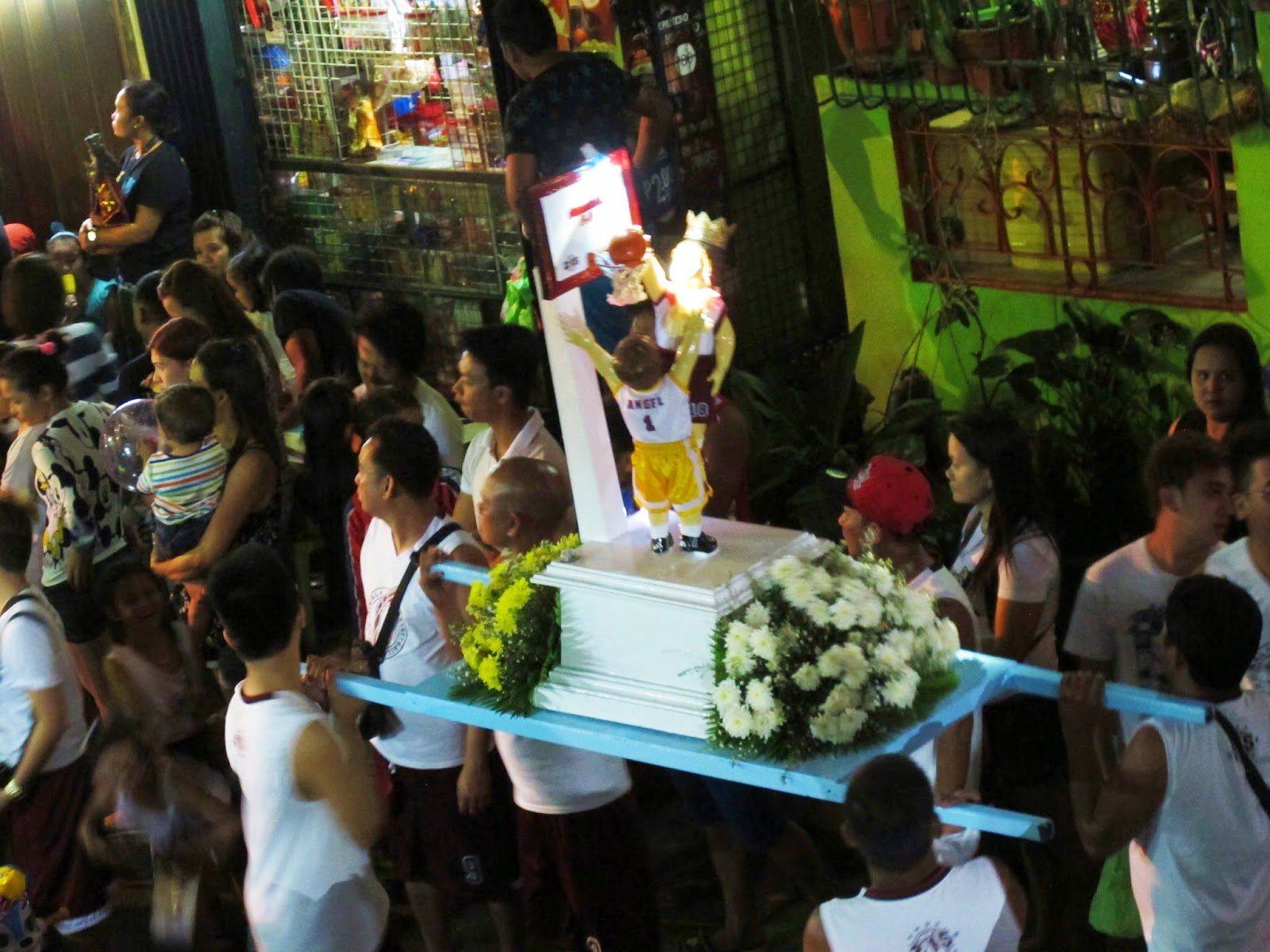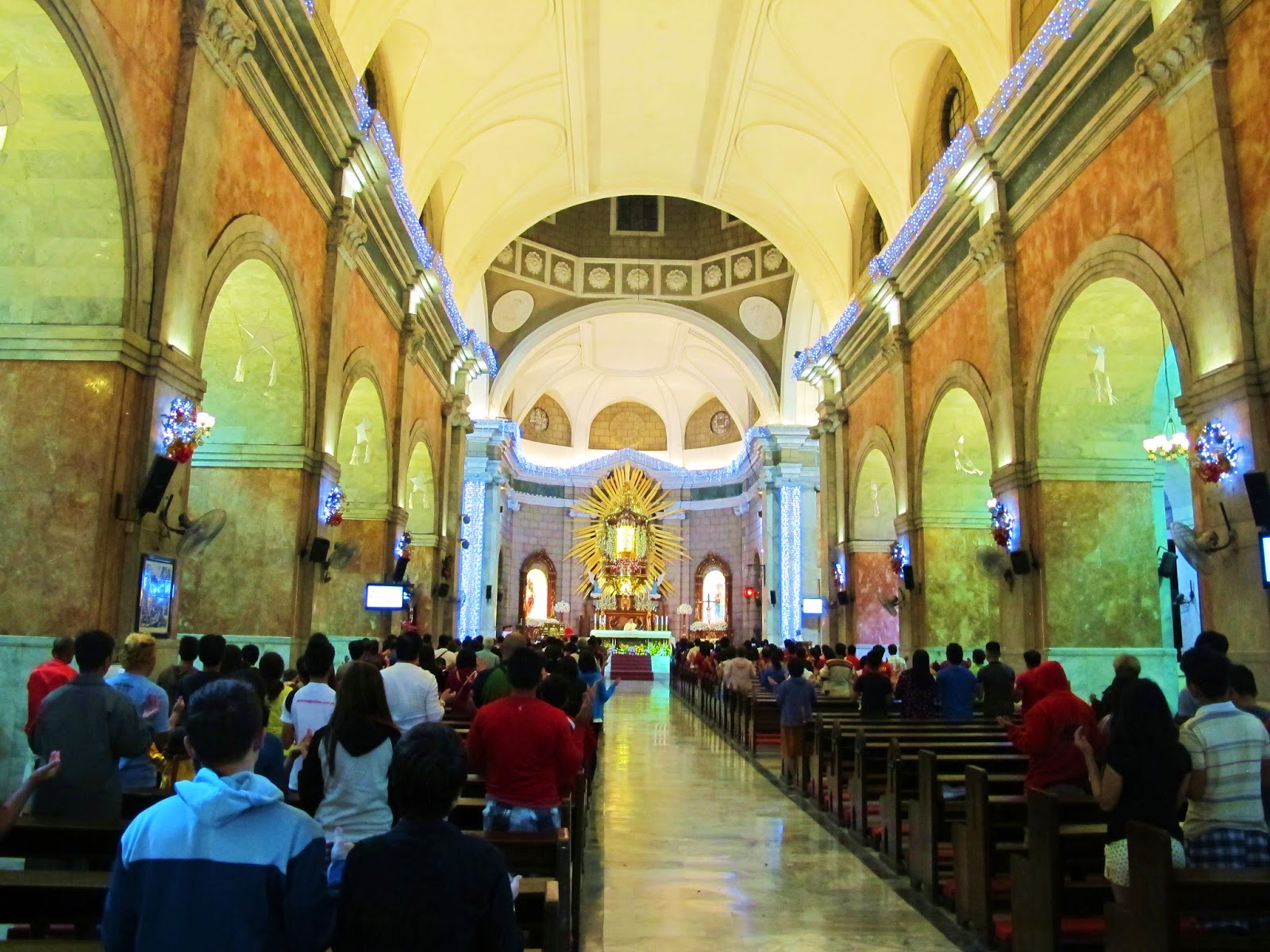The sky was ashen gray on the afternoon of
January 17, 2015. A storm was coming, Mekkhala (locally called Amang), which
brought rains on Pope Francis’ visit to Leyte that day. But the strip of sky
over F. Varona Street in Tondo was brightened with varicolored buntings,
fluttering in the occasional cold gusts. Aside from the makeshift stores
selling snacks, from deep-fried fish balls to repackaged J. Co donuts, the
street was lined with statues of Santo Niño, the infant Jesus, a popular
religious icon in the Philippines. The statues came in many sizes and dressed
in every imaginable costumes—from the traditional princely attire in velvet and
gilt embroidery to uniforms of different professions.
Every year, the residents of Tondo bring out
their Santo Niño statues for his feast day, every third Sunday of January. The
Santo Niños were already out on the streets on the bisperas, or eve of the feast day. Residents were already receiving
guests, who partook of the food and were anticipating the Lakbayaw Festival
parade, which was due to start at 1 p.m. starting at the Tondo Church. It was
slated to go through the streets of Ylaya, Claro M. Recto, Asuncion, Zaragosa,
Wagas, J. Luna, Pritil, Herbosa, Velasquez, Ugbo, F. Varona, Perla, Santa Maria
and J. Nolasco. The route only minimally changes every year, and every year it
passes through F. Varona. What if it doesn’t?
“Magpoprotesta
ang mga tao. Pupunta sa simbahan, lalo na ang mga matatanda (The people will
protest. They will got the church, especially the old ones),” said literature
professor and long-time resident Ferdinand Lopez.
At past five, the parade did arrive, bearing a
multitude of Santo Niño statues in karosas
or other vehicles, some made to dance as a sign of devotion, and full of
dancing groups. In recent years, the fiesta has imbibed the festival elements,
especially the street dancing, that have been in trend in the country. They
dispensed though with the gaudy costumes and opted for uniform T-shirts and
modern, popular Western dances and music, perhaps befitting the vibe of the
Manila district, the most densely populated in the country. Most of the
participants were young people, who have the endurance to dance and parade for
more than five hours. Recently, the all-male group from Willie’s Gym has become
popular for taking off their shirts to show their chiselled bodies while
dancing. The parade was perhaps one of the longest in the country, ending at
about past midnight. In the early days, the fluvial procession was the one that
attracted many visitors.
On L. Chacon Street, Tondo Church began
celebrating masses when the parade ended. Its present structure was built in
the mid-nineteenth century. This is where the old Santo Niño statue is housed.
It is said that the statue came from came from Acapulco, Mexico. A rich
merchant gave it to the Archbishop of Manila, who later gave it over to the
parish priest of Tondo in 1572. There are several folk stories about the image.
One of the most popular is the account of its theft. The image was stolen on
July 14, 1972. During this time, people say it rained incessantly, flooding
most parts of Tondo. Three days later, the statue was found but dismembered. It
is partly made of ivory with gold and silver embellishments. The image was
brought to the Malacañan Palace to be repaired and was returned to Tondo on
Aug. 2 via a procession led by then First Lady Imelda Marcos. Upon its return,
the rain stopped and the floods subsided. The procession on January 18 was more
solemn and traditional. Karosas and makeshift floats bearing the Santo Niños
assembled by the church as early as four in the morning. The procession went
through a more circuitous route, going to more streets as the sky slowly began
to light up.
 |
| Along F. Varona Street |
 |
| Willie's Gym contingent |
 |
| The Santo Nino de Tondo Church |
 |
| The Santo Nino de Tondo |
All photographs by Roel Hoang Manipon






















No comments:
Post a Comment